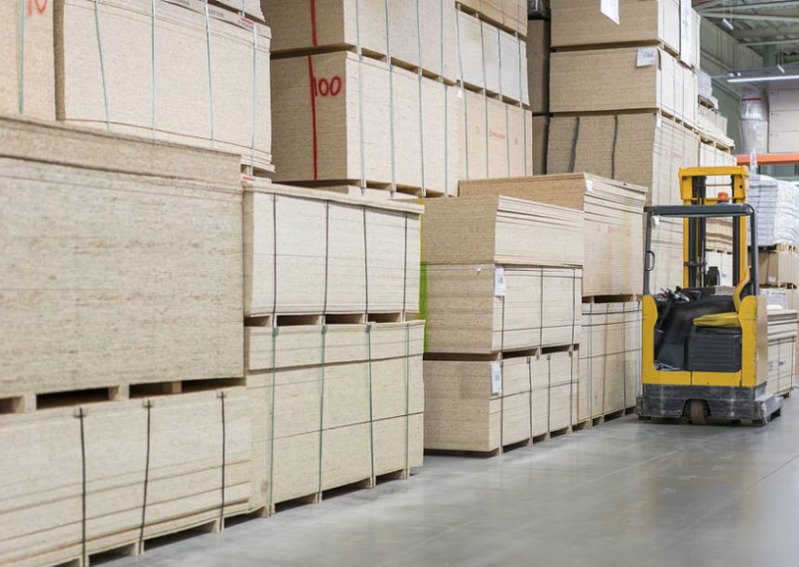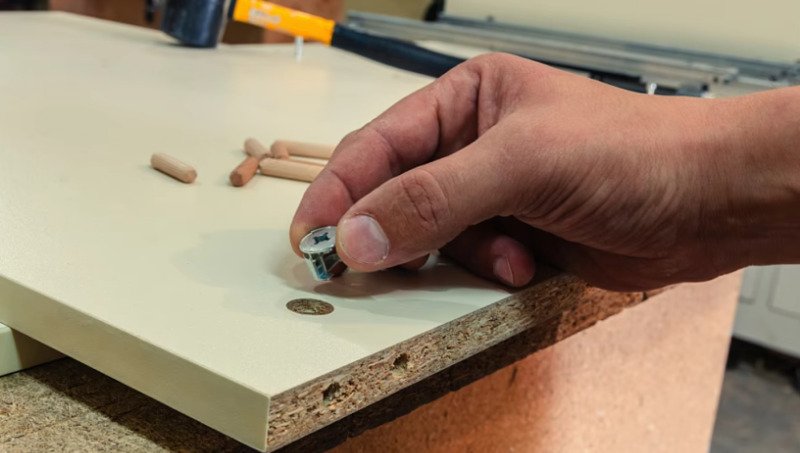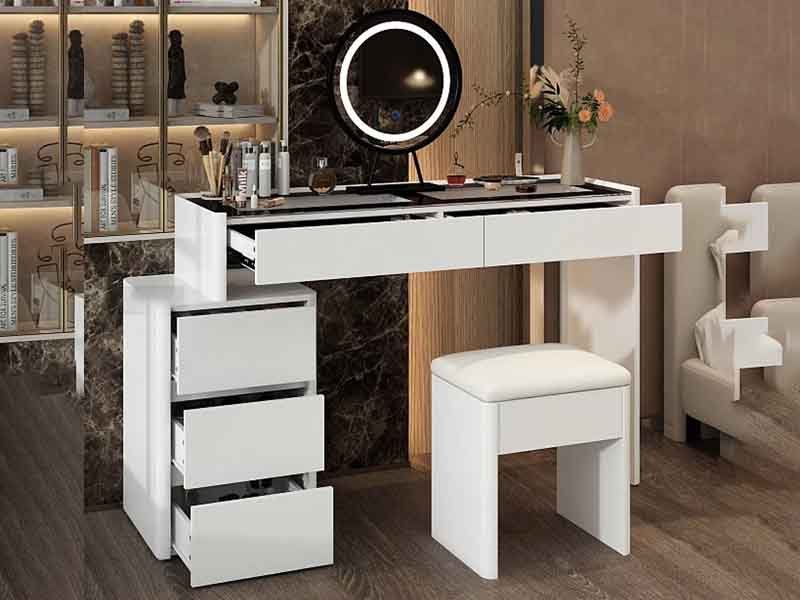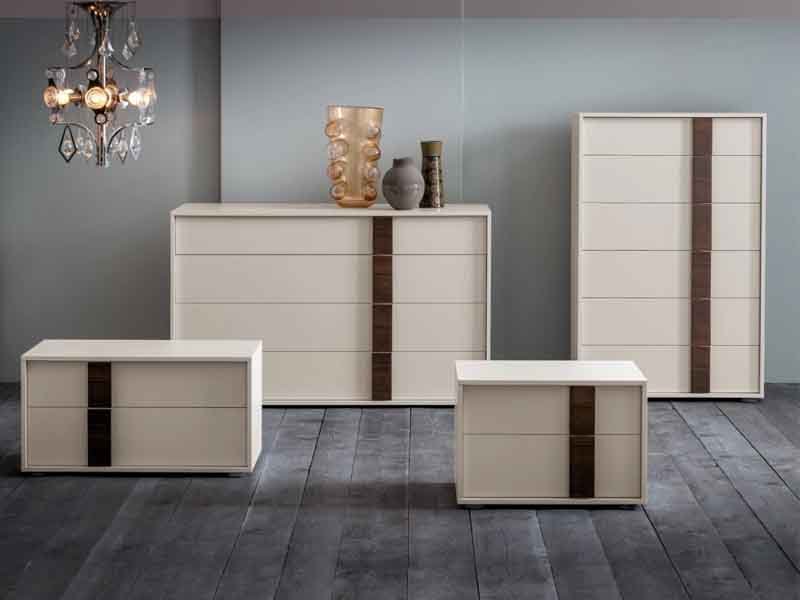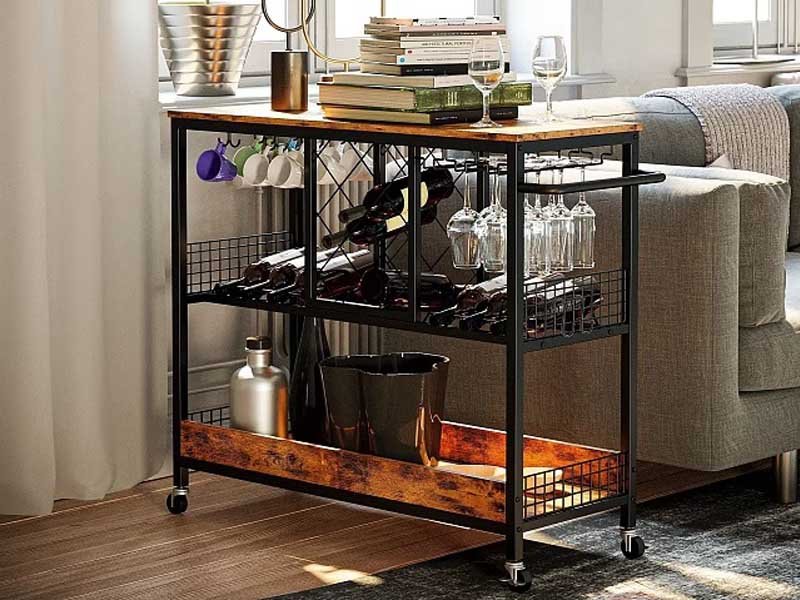MDF is a popular yet misunderstood material in furniture. Many face challenges in selecting durable options, leading to costly mistakes. Understanding MDF's properties can enhance purchasing decisions.
MDF board durability profoundly influences your furniture importing decisions by providing a cost-effective, versatile material that balances appearance and longevity, ensuring customer satisfaction and profitability.
As I’ve navigated the furniture importing landscape, I realized the importance of selecting the right materials, particularly MDF. The right choice can impact not just the aesthetics, but also the longevity and overall satisfaction of your customers. In this article, we’ll explore how MDF durability affects your buying choices and how to make informed decisions.
How Does MDF Board Impact Furniture Importing?
A frequent challenge is selecting the right materials. Misunderstanding MDF's qualities can lead to poor choices. This impacts product quality and company image. A precise approach is needed.
Medium Density Fiberboard (MDF) significantly influences cost and versatility in furniture production, offering a robust yet affordable alternative to solid wood. Correctly understanding MDF's properties ensures production of high-quality, competitively priced furniture.

Furniture
Understanding the Material
Medium Density Fiberboard, known as MDF, is a primary material in furniture production. Its application ranges from cabinet doors to shelves. It is renowned for its cost-effectiveness1 and versatility. MDF is engineered from wood fibers. These are bonded with a synthetic resin under high pressure and temperature. This process results in a dense, durable, and smooth-surfaced board. This unique composition offers advantages but also requires careful handling.
Quality and Cost Benefits
A significant feature of MDF is its smooth surface2. This attribute allows for diverse finishing options. Whether through veneers or laminate coverings, MDF can aesthetically mimic higher-end materials. This flexibility suits both contemporary and classic designs. The resulting furniture appeals to a variety of market preferences.
Moreover, MDF allows substantial cost reductions in manufacturing. This advantage is crucial when targeting cost-sensitive markets. The savings can be used to offer more competitive pricing. This does not mean compromising on appearance, as MDF can seamlessly replicate the look of more expensive solid wood.
Potential Pitfalls and Solutions
However, a lack of understanding of MDF's characteristics can lead to missteps. Some buyers might doubt its durability compared to solid wood. This misconception affects purchasing decisions. Poor choices can impact product longevity and brand reputation. To mitigate these effects, it is vital to educate stakeholders on MDF's strengths and limitations.
Evaluating Material Suitability
Here's a simple comparison to help assess MDF's suitability:
| Aspect | MDF | Solid Wood |
|---|---|---|
| Cost | More affordable | Generally expensive |
| Surface Finish Options | Versatile; many coatings possible | Limited due to natural grain |
| Durability | High when properly used | Generally longer-lasting |
| Environmental Impact | Manufactured from recycled wood | Depends on source |
| Weight | Heavier | Lighter |
This table outlines MDF's relative benefits and limitations compared to solid wood. Using MDF can lead to effective, long-term business practices. Properly understanding this material provides competitive advantages in pricing and design3.
Concluding Thoughts
It is important to understand MDF’s critical role in furniture production4. Grasping the benefits and potential pitfalls is crucial. An informed approach aids decisions that enhance product quality. This builds a strong brand reputation. In my perfect world, every player would appreciate MDF's potential to create quality, attractive, and cost-effective furniture solutions5.
MDF board is a cost-effective alternative to solid wood in furniture production.True
MDF offers significant cost reductions compared to solid wood without compromising on appearance, making it an attractive choice for manufacturers.
MDF board is lighter than solid wood, making it easier to handle during production.False
In fact, MDF is generally heavier than solid wood, which can make it more challenging to handle in furniture production.
What Factors Affect the Durability of MDF?
Understanding MDF durability involves considering density, manufacturing, and coatings. Identifying durable MDF leads to longer-lasting furniture.
MDF durability is influenced by factors like density, processing quality, and moisture-resistant coatings. Selecting high-density, moisture-resistant, and formaldehyde-free MDF enhances durability and meets health standards.
Understanding MDF Density and Its Impact
Density is crucial for MDF's durability. High-density MDF has compact fibers. This compactness increases impact resistance and longevity. Low-density MDF is weaker. This makes it less suitable for furniture prone to wear. High-density MDF6 is ideal for heavily used areas, such as tabletops or door panels.
Density levels vary. Users should check Density levels vary. Users should check density specifications7 when choosing MDF. Here is a simple reference table:
| MDF Type | Density (kg/m³) | Application Recommendations |
|---|---|---|
| Low Density | Less than 600 | Decorative use only |
| Medium Density | 600 - 800 | General furniture usage |
| High Density | More than 800 | High wear areas |
Density impacts material strength and lifespan. Higher density MDF resists dents, scratches, and impacts more effectively. This makes it more durable in high-use settings.
The Role of Moisture-Resistant Coatings
Moisture is MDF's enemy. Basic MDF swells and warps in damp environments. Applying moisture-resistant coatings8 protects MDF. These seals are crucial in regions like coastal Europe and Southeast Asia. Here, humidity often challenges furniture integrity.
Select MDF treated with these coatings. It withstands humidity. This preserve its structure over time. Moisture-resistant MDF works well in kitchens, bathrooms, and outdoor furniture. It maintains form and resists environmental stresses.
WHY Formaldehyde-Free MDF Matters
Environmental and health standards are changing. Formaldehyde is now a concern. Many consumers prefer formaldehyde-free MDF9. This preference grows in North America and Europe.
Formaldehyde affects air quality. It poses health risks. Many manufacturers now produce formaldehyde-free MDF. They do this to meet standards and satisfy consumer preferences. These MDFs are eco-friendly and safe. Users concerned about chemical off-gassing should opt for this type.
Conclusion: Making Smart MDF Choices
MDF durability relies on density, manufacturing, and the coatings used. Choose high-density MDF10 for high-wear areas. Ensure moisture resistance for humid environments. Opt for formaldehyde-free MDF to meet health standards and preferences. By considering these factors, we can enhance the lifespan and safety of MDF products. Follow these rules to choose durable, high-quality MDF.
High-density MDF is recommended for heavily used areas such as tabletops and door panels.True
High-density MDF has compact fibers that increase impact resistance and longevity, making it suitable for high-wear applications.
Low-density MDF is ideal for high-wear areas like kitchens and bathrooms.False
Low-density MDF is weaker and is only suitable for decorative use, not for areas prone to wear and moisture like kitchens and bathrooms.
Why is the Demand for Eco-Friendly MDF Growing in North America?
North American consumers worry about the environment. This drives demand for MDF with low formaldehyde emissions11 and eco-friendly characteristics12.
The demand for eco-friendly MDF in North America is growing as consumers increasingly prefer sustainable materials in furniture. MDF with low formaldehyde emissions provides a solution to these environmental concerns.
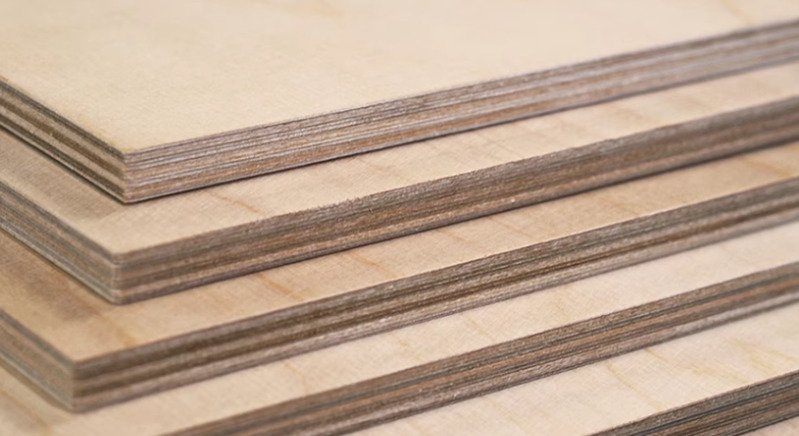
Understanding the Trend Towards Eco-Friendly MDF
In North America, environmental responsibility is becoming a key consideration. This trend is reflected in the materials used in furniture manufacturing. Traditional wood products with high formaldehyde levels are losing favor. MDF, known for its low formaldehyde emissions, aligns with eco-conscious values. It offers a safer option for both the environment and human health.
Families across North America are becoming more aware of indoor air quality13. Low emissions are crucial for maintaining a safe and healthy home environment. MDF's innovation meets these consumer demands. The production process of MDF has seen significant investments to minimize harmful emissions effectively. This makes MDF a top choice for sustainable furniture solutions.
Key Benefits of Eco-Friendly MDF
The benefits of eco-friendly MDF go beyond low emissions. The table below outlines these benefits:
| Benefit | Impact |
|---|---|
| Low Formaldehyde Emissions | Reduces indoor air pollution |
| Recyclable Material | Promotes sustainability |
| Cost-Effective | Affordable alternative to hardwood |
| Versatile Use | Suitable for various furniture types |
MDF is made from wood fibers bonded with resin, making it less wasteful. Unlike solid wood, MDF uses leftovers and recycled materials. This efficiency results in minimal environmental impact. Eco-friendly MDF is an excellent choice without the drawbacks of deforestation.
How Manufacturers Adapt
Manufacturers adapt by implementing more eco-friendly practices. They are updating production techniques to meet stricter regulations. Many manufacturers are opting for formaldehyde-free glue, further enhancing the safety of MDF products. These changes are why MDF fits into the needs of North American consumers.
North American industries are also responding to regional eco-certifications and standards. By achieving these certifications, they guarantee that their MDF products meet high eco-friendly standards. Labels like FSC (Forest Stewardship Council) certification14 are increasingly crucial. They assure customers of responsible forestry practices.
The move towards eco-friendly products has a domino effect, influencing furniture designers too. Designers now create with sustainability in mind, focusing on MDF's adaptable nature. Innovative designs take advantage of MDF's ability to hold complex shapes without compromising on environmental standards.
Conclusion
The demand for eco-friendly MDF in North America reflects broader societal shifts towards sustainability. Low emissions and adaptable properties position MDF as a preferred material. As the industry evolves, eco-friendly practices will only broaden the appeal of MDF products, benefiting both makers and consumers. This trend isn't just a fad; it's a reflection of a changing world.
The demand for eco-friendly MDF in North America is increasing due to consumer preference for sustainable materials.True
Consumers are increasingly prioritizing environmentally friendly options, driving up demand for MDF with low emissions.
Traditional wooden products with low formaldehyde levels are gaining popularity over MDF.False
MDF with low formaldehyde emissions is replacing traditional wood products, which generally have higher formaldehyde levels.
What Are the Business Benefits of Using MDF in Product Lines?
Consistent quality, style diversity, and competitive pricing: these are the business benefits of integrating MDF15 into product lines that manufacturers can exploit.
MDF offers consistent quality, enabling predictable outcomes in manufacturing. It expands design possibilities without high costs and supports competitive pricing, especially in entry to mid-level markets.
Understanding MDF's Role in Business Efficiency
The use of Medium-Density Fiberboard (MDF) in product lines brings pronounced benefits. Primarily, MDF stands out due to its consistent quality16. This characteristic is not merely a material advantage. It translates directly into predictable outcomes during the manufacturing process. When you know what to expect from each sheet or panel of MDF, planning becomes smoother. The results align with expectations. It reduces surprises that disrupt production schedules.
Table: MDF vs. Solid Wood in Production
| Aspect | MDF | Solid Wood |
|---|---|---|
| Quality Consistency | High | Varies due to natural grain |
| Cost of Styles | Low for diverse styles | High, with extensive redevelopment |
| Market Suitability | Entry to mid-level | Often mid to high-level |
Such reliability in quality impacts more than just production. On the logistic front, it eases inventory management17. Bulk purchasing and storage become simpler tasks. It allows better predictability of supply needs and reduces unexpected shortages or excess.
With regards to design, MDF offers flexibility that denotes a major advantage. It supports numerous styles and finishes. Therefore, manufacturers can readily adapt to changing market trends. Consumers’ taste can be fickle. Shifts in style preferences can prompt rapid changes in product designs. MDF facilitates these changes without the hefty costs associated with solid wood. When using wood, alterations can mean entirely redeveloping a product line. With MDF, the impact is minimal, yet the potential for innovation remains vast.
Analyzing the importance of competitive pricing18 is crucial, especially for the entry to mid-level markets. In these segments, price sensitivity is critical. Switching to MDF for a product line allows businesses to maintain attractive price points. This does not just keep them in the game. More often, it positions them favorably against competitors.
So, integrating MDF is not just about cutting costs. It is a strategic move that grants agility in manufacturing and responsiveness to market trends. It lays a clear path to maintaining competitive prices without sacrificing quality or style. For businesses aiming at a broad audience, exploiting MDF’s advantages could prove essential for sustained growth and market relevance. Through MDF, companies tie operational efficiency directly with consumer satisfaction and market trend alignment.
MDF provides consistent quality that improves predictability in manufacturing processes.True
The quality consistency of MDF enables manufacturers to have predictable outcomes, minimizing surprises that could disrupt production schedules.
MDF is more expensive than solid wood when producing diverse styles.False
MDF is noted for having lower costs for diverse styles compared to solid wood, which can be expensive due to extensive redevelopment needs.
Can MDF Withstand Heavy Wear or Moisture?
Consumers doubt MDF's durability against wear and moisture which affects their choices. Highlighting technical advancements can ease these concerns.
Yes, MDF can endure wear and moisture through high-performance variants designed specifically for resilience and longevity. These variants rival traditional timber in robustness, offering a more versatile and aesthetically pleasing alternative without compromising quality.
High-Performance MDF Variants
Several types of MDF are built to handle demanding environments. Specialized techniques enhance their resistance to elements that cause wear and moisture damage.
Strengthening MDF
-
Resin Formulations19: Advanced resin formulations increase MDF's moisture resistance. Some are even water-repellent. This is crucial, especially for usage in humid environments. When water contact is inevitable, these MDF types perform well with minimal swelling.
-
Compression Techniques20: MDF manufacturing now includes improved compression techniques. These create denser and more durable boards. Higher density results in boards that are closer in strength to traditional wood. This means they can bear more weight and resist dents or scratches effectively.
-
Surface Treatments21: Surface coatings protect MDF from wear and moisture. A variety includes veneers, laminates, and sealant coatings. They not only boost durability but also offer varied decorative finishes. Clients seeking aesthetics with functionality find ideal solutions in these treatments.
Case Study Analysis
In regions with humid climates, such as parts of Southeast Asia, high-performance MDF has seen a deployment in notable projects.
Implementation Example: A residential development in Malaysia incorporated MDF for kitchen cabinets and wall paneling. Despite heavy usage in a humid environment, the MDF installations remained intact after five years. Reports confirmed minimal water-related damage and excellent wear resistance. A combination of high-strength MDF, water-repellent treatments, and quality installations proved successful.
MDF: Aesthetic Versatility Meets Quality
MDF is more than just practical. Its versatility extends to its aesthetics. Decorative effects achieved with MDF parallel the quality seen with natural wood.
Mimicking Timber
-
Surface Finish Options: MDF can mimic timber through finishes that replicate natural wood grain patterns. The availability of various finishes provides an array of visual identities, making it challenging to differentiate from solid wood.
-
Custom Design Possibilities: Modern machining techniques allow for custom milling of MDF. Intricate designs, once exclusive to timber artisanship, are now possible with MDF. Intricate moldings, panels with detailed carving, and other decorative elements come to life with precision.
-
Range of Finishes: Finishes do not stop at wood impressions. Glossy, matte, textured, or even vibrant colors add diversity. This palette of options makes MDF part of sophisticated interior designs. When design style demands a specific look, MDF’s adaptability makes it distinct.
Concluding Thoughts
Technology and design capabilities echo what was once only achievable with traditional wood. MDF's advanced variants, through improved formulas, durability tactics, and finishing techniques, show promise. In both humid and fashionable settings, MDF stands as a competitive alternative.
By demystifying common misconceptions, MDF’s place in the market is more certain. With evidence of its resilience and aesthetic flexibility, MDF's applications may broaden, aligning consumer choices more closely with modern material offerings.
High-performance MDF can withstand moisture and wear effectively.True
High-performance variants of MDF are specifically engineered to resist moisture and wear, making them suitable for demanding environments.
MDF's aesthetic versatility limits it to only traditional wood finishes.False
MDF can achieve a wide range of finishes, including glossy, matte, and vibrant colors, allowing for aesthetic diversity beyond just wood-like appearances.
How Can Partnerships with High-Grade MDF Manufacturers Enhance Product Quality?
Partnering with quality MDF manufacturers solves consistency issues. It reduces quality control22 headaches and meets consumer expectations.
Working with respected MDF manufacturers improves product quality by ensuring uniform excellence, reliability, and durability. This consistency results in fewer defects and enhanced customer satisfaction, ultimately boosting brand reputation and sales.
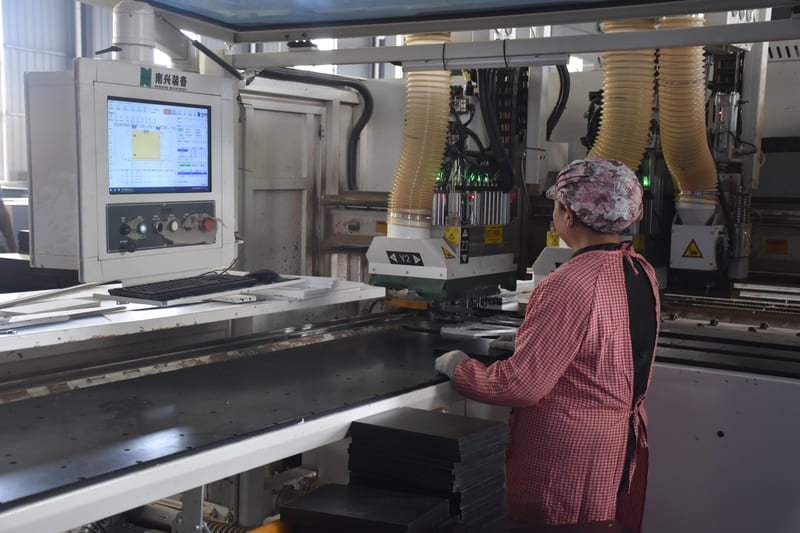
Understanding the Importance of High-Grade MDF
When it comes to MDF, not all products are created equal. Quality can vary significantly between manufacturers. As someone invested in offering exceptional products, partnering with a manufacturer known for producing high-grade MDF23 is crucial. This relationship ensures the quality and consistency that end-users expect. High-grade MDF provides reliable durability and a superior finish that withstands various environmental conditions.
Benefits of Manufacturer Partnerships
The benefits of these partnerships extend beyond the immediate quality improvements. By working closely with respected manufacturers, you position yourself to leverage their expertise and innovations. Trusted partners can offer insights into emerging trends in MDF production techniques. They can provide access to advanced materials that others simply cannot offer.
Furthermore, established partnerships often come with preferential terms. This could include better pricing or priority access during high demand periods. This advantage not only helps maintain a competitive edge but also potentially improves profitability.
Implementing Quality Control Measures
Quality control remains a critical aspect of any supply chain. However, partnering with high-grade manufacturers simplifies this process. These manufacturers typically employ stringent quality checks at each production stage. This reduces the frequency and cost of returns and complaints. Your responsibility then shifts to verifying that these standards are met rather than implementing full-scale quality checks internally.
Here's a simple table illustrating potential quality checks:
| Quality Control Aspect | Description |
|---|---|
| Density Verification | Assessing the MDF density |
| Surface Finish | Ensuring smooth, defect-free finish |
| Moisture Resistance | Checking MDF’s moisture handling capabilities |
Building a Strong Market Presence
Highlighting these partnerships in your marketing strategy can further enhance your brand’s perception24. Consumers are increasingly discerning, demanding transparency and quality in the products they purchase. Communicating that your products are sourced from top-tier MDF manufacturers25 aligns with these consumer expectations. It also reinforces trust and reliability in your offerings.
Conclusion
In the dynamic world of MDF products, aligning with top-notch manufacturers can transform your business model. It helps to ensure product quality. It enhances the brand's reputation and also opens doors for future innovations. By prioritizing these strategic partnerships26, you not only solve immediate quality issues but also set the stage for sustained success.
Partnering with high-grade MDF manufacturers can enhance product quality and reduce defects.True
High-grade MDF manufacturers implement stringent quality controls that lead to uniform excellence and fewer defects in the final products.
All MDF manufacturers provide the same quality of products regardless of their established reputation.False
Quality can significantly vary between manufacturers, and partnering with respected ones ensures higher standards and consistency in MDF quality.
Conclusion
Understanding MDF's durability and quality is essential for importers to make informed decisions, enhance product offerings, and align with consumer preferences for sustainability and style.
-
Learn how cost-effectiveness influences furniture production and pricing strategies in the industry. ↩
-
Discover why a smooth surface is essential for finishing options and overall furniture aesthetics. ↩
-
Exploring competitive advantages can help you leverage MDF for better pricing strategies and innovative designs in your projects. ↩
-
Understanding MDF's role can enhance your furniture design and production strategies, leading to better quality and cost-effectiveness. ↩
-
Discovering cost-effective solutions can significantly improve your business's profitability and sustainability in furniture production. ↩
-
Discover the advantages of high-density MDF, including its impact resistance and longevity, which are essential for durable furniture. ↩
-
Learn how to accurately check MDF density specifications to select the best material for your furniture needs. ↩
-
Explore how moisture-resistant coatings can significantly enhance the durability and lifespan of MDF in humid environments. ↩
-
Learn about the health benefits and environmental impact of choosing formaldehyde-free MDF for your projects. ↩
-
Discover the superior strength and durability of high-density MDF, ideal for high-wear areas in furniture design. ↩
-
Explore how low formaldehyde emissions in MDF contribute to healthier indoor air quality and environmental sustainability. ↩
-
Discover the eco-friendly features of MDF that make it a sustainable choice for furniture manufacturing. ↩
-
Learn about the importance of indoor air quality and how MDF can help improve it in your home. ↩
-
Learn about FSC certification to understand its role in promoting responsible forestry and ensuring sustainable materials in your products. ↩
-
Learn about the strategic advantages of using MDF in your product lines for better business outcomes. ↩
-
Discover insights on the importance of consistent quality in manufacturing and its effects on productivity. ↩
-
Learn about effective inventory management practices to streamline operations and reduce costs, crucial for business success. ↩
-
Understanding competitive pricing can help businesses position themselves effectively in the market and attract more customers. ↩
-
Explore how advanced resin formulations enhance MDF's moisture resistance, crucial for humid environments, ensuring durability and longevity. ↩
-
Learn about the latest compression techniques that create denser MDF boards, making them stronger and more durable, ideal for various applications. ↩
-
Discover the various surface treatments for MDF that enhance its durability and aesthetic appeal, making it suitable for both functional and decorative uses. ↩
-
This link will offer valuable strategies for enhancing quality control through effective partnerships, ensuring product excellence. ↩
-
Exploring this resource will provide insights into the advantages of high-grade MDF, enhancing your understanding of its importance in production. ↩
-
This link will offer valuable strategies to improve your brand's perception in a competitive market. ↩
-
Exploring this resource will provide insights into how top-tier manufacturers can elevate your brand's quality and reputation. ↩
-
Understanding the benefits of strategic partnerships can help you leverage collaborations for long-term success. ↩
